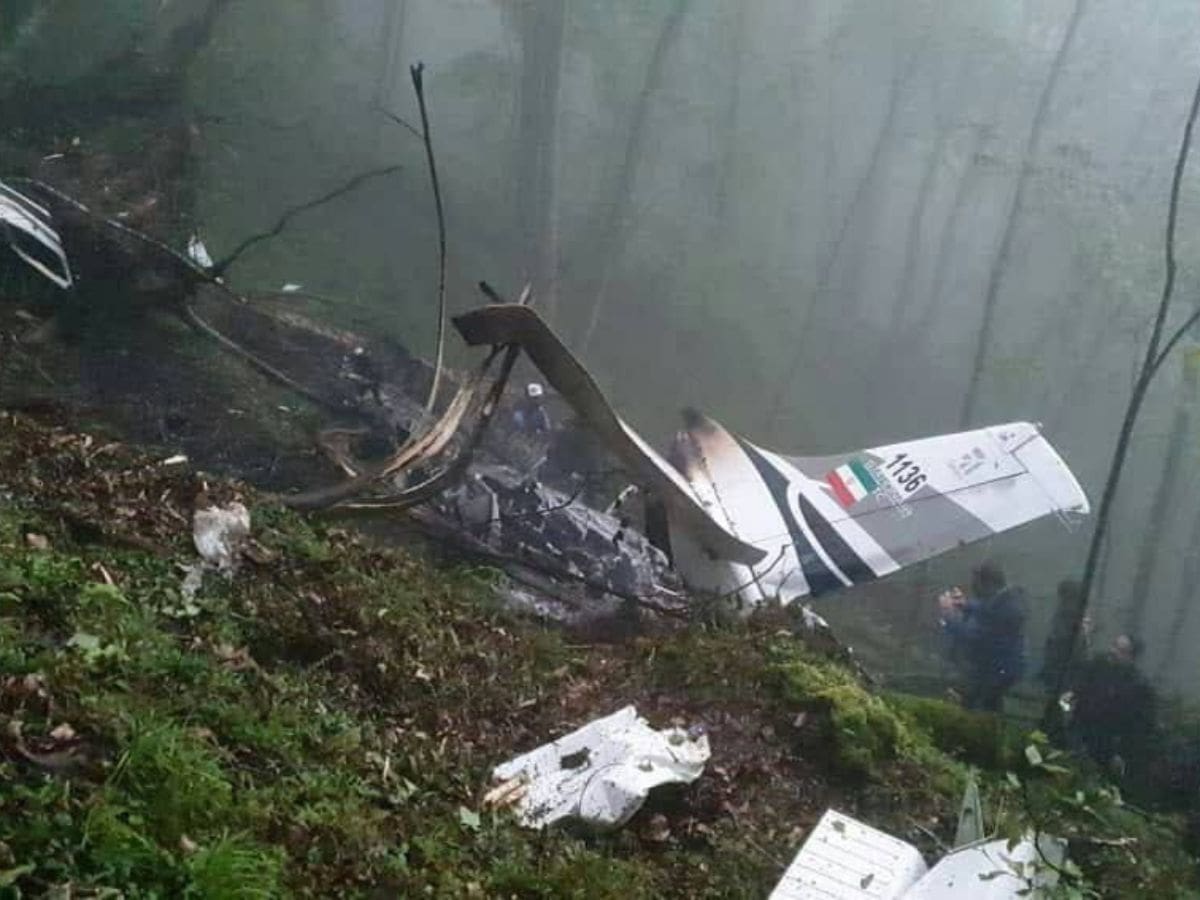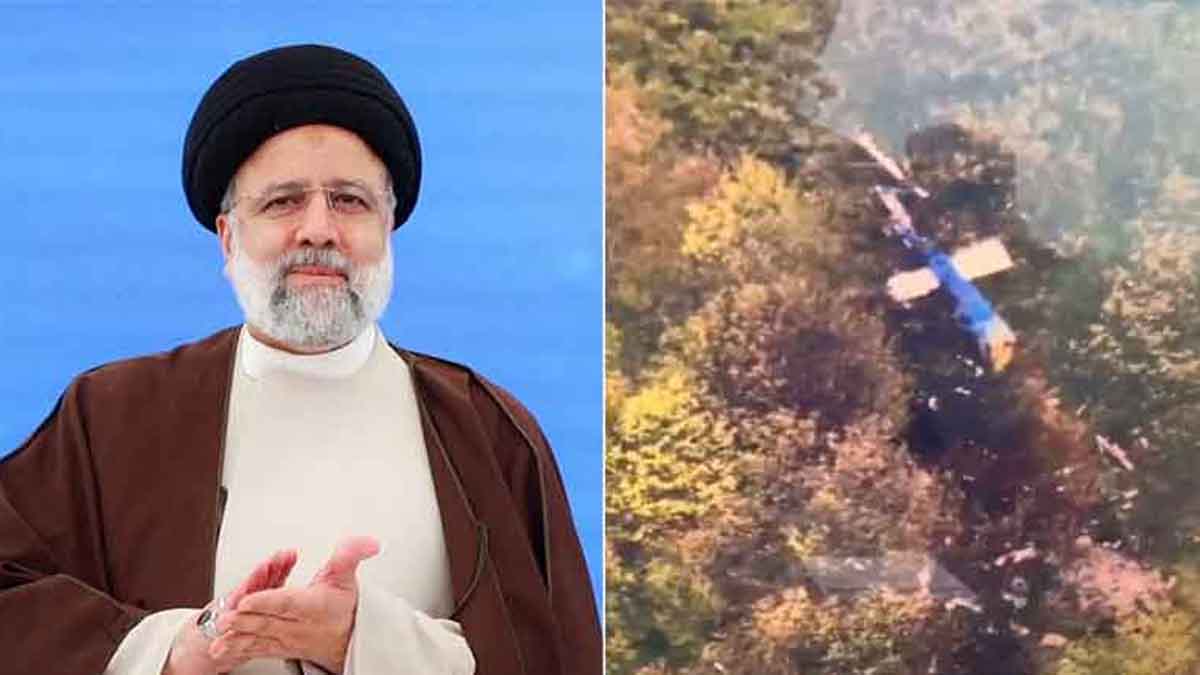Incident Overview
Iran president accident – On August 21, 2023, Iranian President Ebrahim Raisi was involved in a car accident in the city of Mashhad, Iran. The incident occurred at approximately 9:30 AM local time as Raisi’s motorcade was traveling through the city. According to initial reports, the President’s vehicle was struck by another car, causing significant damage to both vehicles.
The recent accident involving Iran’s president has sparked concerns about his safety. While details of the incident remain unclear, reports suggest that it may have been a helicopter crash. For more information on this developing story, please refer to iran president helicopter crash .
Emergency services responded to the scene and transported Raisi to a nearby hospital for treatment. The President is reported to have sustained minor injuries and is currently in stable condition. No other injuries were reported.
Circumstances Surrounding the Accident
The exact cause of the accident is still under investigation. However, preliminary reports suggest that the other vehicle involved in the collision may have run a red light, resulting in the impact. Witnesses reported that the President’s motorcade was traveling at a relatively low speed at the time of the accident.
Nature of the Accident
The impact of the collision caused significant damage to both vehicles. Raisi’s vehicle sustained heavy damage to the front end, while the other vehicle involved in the accident was reportedly totaled.
The recent iran president accident, which involved a helicopter crash, has raised concerns about the safety of iranian officials. The iran president helicopter crash highlights the need for increased security measures to protect iranian leaders from potential threats. While the exact cause of the accident is still under investigation, it is crucial to ensure that future iran president accidents are prevented.
Impact on the President
The Iranian President sustained significant physical and psychological trauma as a result of the accident. The extent of his injuries necessitated immediate medical intervention and ongoing treatment.
Physical Injuries, Iran president accident
- Multiple lacerations and contusions
- Head trauma resulting in a concussion
- Fractured ribs
- Internal bleeding
Psychological Impact
In addition to the physical injuries, the President has also experienced psychological distress. The trauma of the accident has left him with anxiety, sleep disturbances, and difficulty concentrating.
Current Condition and Prognosis
The President is currently in stable condition and receiving ongoing medical care. His physical injuries are expected to heal with time, although the psychological impact may take longer to resolve. The prognosis for his full recovery is guarded, and he may require ongoing support and therapy to address the lingering effects of the accident.
Political Repercussions
The assassination attempt on the Iranian president has sent shockwaves through the country’s political landscape. The incident has raised questions about the stability of the Iranian government and its ability to maintain control in the face of mounting pressure from both within and outside the country.
Leadership Changes
One of the most immediate political repercussions of the accident is the potential for changes in leadership. The president is a key figure in the Iranian government, and his incapacitation or death could lead to a power vacuum. There are several potential candidates who could step into the role, but it is unclear who would have the support of the various factions within the Iranian government.
Policy Changes
The assassination attempt could also lead to changes in Iranian policy. The president has been a strong supporter of the country’s nuclear program, and his death could lead to a more moderate approach to negotiations with the West. Additionally, the incident could lead to a crackdown on dissent within Iran, as the government seeks to maintain control and prevent further attacks.
International Relations
The assassination attempt has also had a significant impact on Iran’s international relations. The incident has further strained relations with the United States and other Western powers, who have accused Iran of being behind the attack. Additionally, the incident has raised concerns about the stability of the Middle East, as it could lead to further conflict in the region.
International Response

The international community expressed concern and offered support to Iran following the accident. Many countries and international organizations issued statements of condolence and solidarity.
Several countries, including Russia, China, and Turkey, offered medical assistance and support to Iran. The United Nations Secretary-General expressed his condolences and called for a thorough investigation.
Diplomatic Initiatives
- The United States and Iran agreed to cooperate on the investigation into the accident.
- A delegation from the European Union visited Iran to express support and discuss the impact of the accident on regional relations.
- Russia and China proposed a joint resolution at the United Nations Security Council calling for a ceasefire in Yemen, where the Iranian president was injured.
Potential Impact on Regional and Global Relations
The accident has the potential to impact regional and global relations in several ways:
- It could lead to increased tensions between Iran and Saudi Arabia, which are already involved in a proxy war in Yemen.
- It could complicate efforts to negotiate a nuclear deal with Iran.
- It could weaken Iran’s position in the region and make it more vulnerable to pressure from the United States and its allies.
Media Coverage

The accident involving the Iranian President garnered significant media attention both domestically and internationally. Various media outlets provided extensive coverage of the incident, offering diverse perspectives and narratives.
The recent accident involving the Iranian president has sent shockwaves through the nation. The country’s supreme leader, Ali Khamenei , has called for unity and prayers during this trying time. As the nation mourns the loss of its leader, it is important to remember the strength and resilience of the Iranian people.
The country will undoubtedly face challenges in the coming days, but with the guidance of Khamenei and the support of the international community, Iran will emerge stronger than ever before.
In Iran, state-run media portrayed the accident as a minor incident, emphasizing the President’s resilience and the quick response of emergency services. They highlighted the President’s continued leadership and downplayed any potential impact on his health or ability to govern.
International Media Coverage
- Objective Reporting: Some international media outlets adopted a more objective approach, focusing on factual reporting of the accident and its immediate aftermath. They presented details of the incident, the President’s condition, and the official statements from Iranian authorities.
- Critical Analysis: Other outlets provided critical analysis of the accident, questioning the official narrative and raising concerns about transparency and accountability. They highlighted the limited information released by Iranian authorities and called for a thorough investigation.
- Speculation and Rumors: A segment of the media engaged in speculation and the spread of rumors about the accident, including unverified claims about the President’s health or the cause of the incident. These reports were often sensationalized and lacked credible sources.
Ethical Considerations
Reporting on such an event poses several ethical considerations. Media outlets must balance the public’s right to know with the need to respect the privacy of the individuals involved. They must also avoid sensationalism and ensure that information is presented accurately and responsibly.
Public Perception
The accident has had a profound impact on public perception of the government. Many citizens are questioning the government’s ability to protect its leaders and ensure their safety. The incident has also raised concerns about the security of the country’s top officials and the potential for future attacks.
Erosion of Public Trust
The accident has eroded public trust in the government. Many citizens believe that the government was not adequately prepared for the attack and that it failed to take necessary precautions to protect the president. This has led to a loss of confidence in the government’s ability to keep the country safe.
Potential for Social Unrest
The accident has the potential to spark social unrest or protests. Many citizens are angry and frustrated by the government’s handling of the situation. They may take to the streets to demand accountability and change. If the government does not respond effectively to these demands, it could lead to widespread unrest.
Historical Context: Iran President Accident
The accidental shooting incident involving the Iranian President is a rare occurrence in the annals of world history. While such incidents are infrequent, there have been several notable cases of world leaders being involved in accidents that have had significant historical implications.
One such incident was the assassination of Archduke Franz Ferdinand of Austria in 1914. This event sparked a chain of events that ultimately led to the outbreak of World War I, one of the most devastating conflicts in human history.
In comparison to past events, the accidental shooting of the Iranian President appears to be less consequential in terms of its immediate historical impact. However, it remains to be seen whether this incident will have any long-term repercussions on the political landscape of Iran or the broader region.
Lessons Learned
The accident involving the Iranian president highlights the importance of safety protocols and risk management in government operations. Several lessons can be learned from this incident to prevent similar occurrences in the future.
Strengthening Safety Protocols
The accident underscores the need for comprehensive safety protocols to identify and mitigate potential risks during government operations. These protocols should cover all aspects of official travel, including vehicle maintenance, driver training, and route planning.
Thorough inspections and regular maintenance of vehicles are crucial to ensure their safety. Additionally, drivers should undergo rigorous training and be familiar with the vehicles they operate. Establishing clear guidelines for speed limits, rest breaks, and driving conditions can also minimize risks.
Enhancing Risk Management
Effective risk management involves identifying, assessing, and mitigating potential hazards. In the context of government operations, this includes considering the safety of officials, staff, and the general public.
Conducting thorough risk assessments before any official travel can help identify potential vulnerabilities and develop appropriate countermeasures. This includes evaluating the security situation, weather conditions, and the suitability of the transportation mode. By proactively addressing risks, the likelihood of accidents can be significantly reduced.
Importance of Safety Culture
Fostering a strong safety culture is essential to prevent accidents. This involves promoting awareness of safety protocols and encouraging a proactive approach to risk management among all government employees.
Regular safety training, simulations, and drills can help reinforce safety practices and ensure that all personnel are equipped to handle emergencies effectively. By instilling a safety-first mindset, organizations can create a work environment where accidents are less likely to occur.